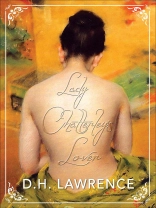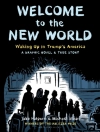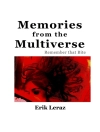Filled with scenes of intimate beauty, explores the emotions of a lonely woman trapped in a sterile marriage and her growing love for the robust gamekeeper of her husband’s estate. The most controversial of Lawrence’s books, Lady Chatterly’s Lover joyously affirms the author’s vision of individual regeneration through sexual love. The book’s power, complexity, and psychological intricacy make this a completely original work—a triumph of passion, an erotic celebration of life.
Love and personal relationships are the threads that bind this novel together. Lawrence explores a wide range of different types of relationships. The reader sees the brutal, bullying relationship between Mellors and his wife Bertha, who punishes him by preventing his pleasure. There is Tommy Dukes, who has no relationship because he cannot find a woman who he respects intellectually and at the same time finds desirable. There is also the perverse, maternal relationship that ultimately develops between Clifford and Mrs. Bolton after Connie has left. Masterfully written, one of the most important novels of all time.
ABOUT THE AUTHOR:
D.H. LAWRENCE was born September 11, 1885 in Eastwood, Nottinghamshire. His father was a miner and his mother was a school teacher. In 1906 he took up a scholarship at Nottingham University to study to be a teacher. His first novel, ‚The White Peacock‘, was published in 1911. Lawrence gave up teaching in 1911 due to illness. In 1912 he met and fell in love with a married woman, Frieda Weekley, and they eloped to Germany together. They were married in 1914 and spent the rest of their lives together travelling around the world.
In 1915, Lawrence published ‚The Rainbow‘ which was banned in Great Britain for obscenity. ‚Women in Love‘ continues the story of the Brangwen family begun in ‚The Rainbow‘ and was finished by Lawrence in 1916 but not published until 1920. Another of Lawrence’s most famous works, ‚Lady Chatterley’s Lover‘, was privately printed in Florence in 1928 but was not published in Britain until 1960, when it was the subject of an unsuccessful court case brought against it for obscenity. As well as novels, Lawrence also wrote in a variety of other genres and his poetry, criticism and travel books remain highly regarded. He was also a keen painter. He died in France on March 2, 1930.












